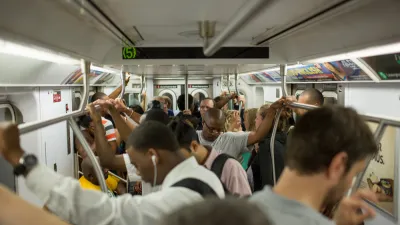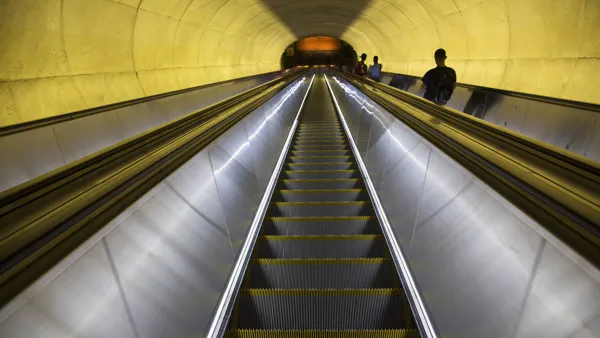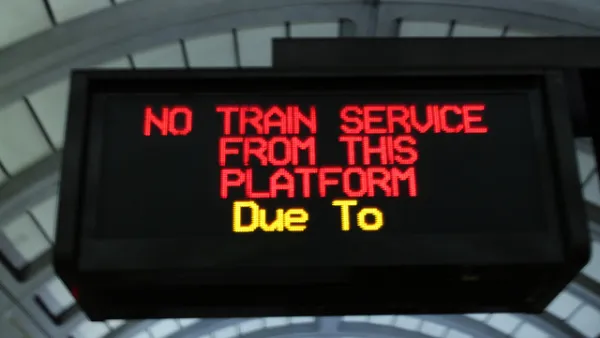Transit commuters in New York and Washington, D.C. were understandably frustrated yesterday. One wonders when enough will be enough, and what happens then?

"At least 37 people were injured Tuesday morning in a subway train derailment in Manhattan," report Paul Berger, Zolan Kanno-Youngs, and Melanie Grayve West for The Wall Street Journal.
"The derailment occurred after the morning rush hour around 9:40 a.m. on an A train traveling between 135th Street and 125th Street stations in Harlem," causing "crippling delays throughout the city’s subway system, affecting at least the A, B, C, D, E and F lines."
The political fallout took a surprising turn throughout the day, as both New York Mayor Bill de Blasio and New York Governor Andrew Cuomo kept the derailment at arm's length—their absence was conspicuous enough to warrant news coverage by Jillian Jorgensen and Aaron Holmes for the New York Daily News. Cuomo and de Blasio are currently in a well documented scrap over control of the MTA—for all the background on that ongoing controversy, start with an article by Amy Plitt that links to a lot more resources on the subject.
Meanwhile in Washington, D.C., there was no derailment to report, but the Red Line ran on a single track for much of the day, and the delays were prodigious. Dana Hedgpeth documented the drama in real time, gathering reactions to the snarled commute from social media and updating the story with reports from Metrorail.
Tuesday's was the second nightmarish transit commute in three weekdays, after two "arcing" incidents on Friday "clobbered" the morning commute. Martine Powers and Rachel Siegel provided reactions to those events by posing a question on the minds of many D.C.-area commuters: what exactly had the year-long maintenance program going by the name SafeTrack accomplished, and would the system's scheduled fare increases (going into effect today, June 25) and reduced services be a death knell for ridership.
FULL STORY: Harlem Subway Derailment Snarls Commute

National Parks Layoffs Will Cause Communities to Lose Billions
Thousands of essential park workers were laid off this week, just before the busy spring break season.

Retro-silient?: America’s First “Eco-burb,” The Woodlands Turns 50
A master-planned community north of Houston offers lessons on green infrastructure and resilient design, but falls short of its founder’s lofty affordability and walkability goals.

Delivering for America Plan Will Downgrade Mail Service in at Least 49.5 Percent of Zip Codes
Republican and Democrat lawmakers criticize the plan for its disproportionate negative impact on rural communities.

Test News Post 1
This is a summary

Test News Headline 46
Test for the image on the front page.

Balancing Bombs and Butterflies: How the National Guard Protects a Rare Species
The National Guard at Fort Indiantown Gap uses GIS technology and land management strategies to balance military training with conservation efforts, ensuring the survival of the rare eastern regal fritillary butterfly.
Urban Design for Planners 1: Software Tools
This six-course series explores essential urban design concepts using open source software and equips planners with the tools they need to participate fully in the urban design process.
Planning for Universal Design
Learn the tools for implementing Universal Design in planning regulations.
EMC Planning Group, Inc.
Planetizen
Planetizen
Mpact (formerly Rail~Volution)
Great Falls Development Authority, Inc.
HUDs Office of Policy Development and Research
NYU Wagner Graduate School of Public Service





























